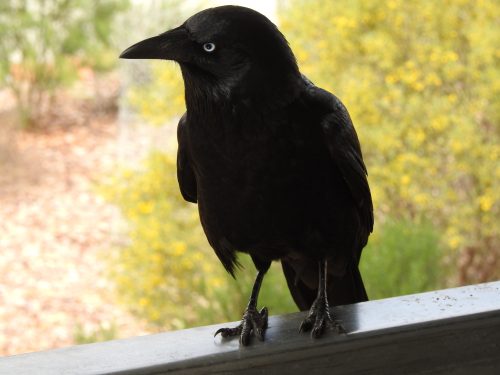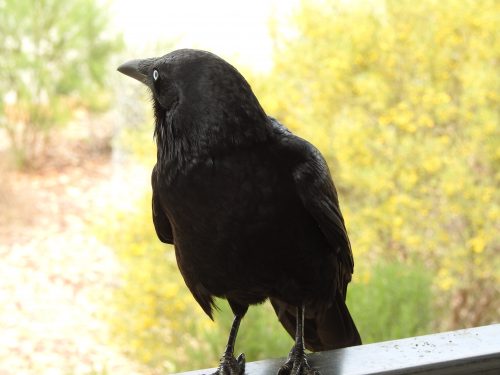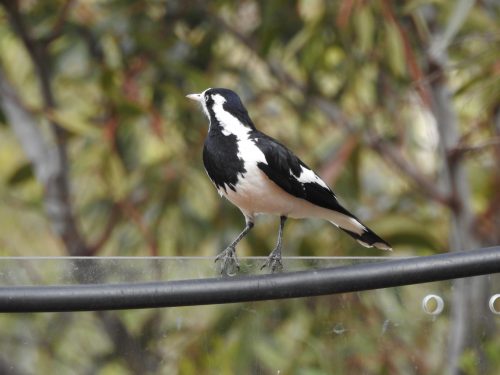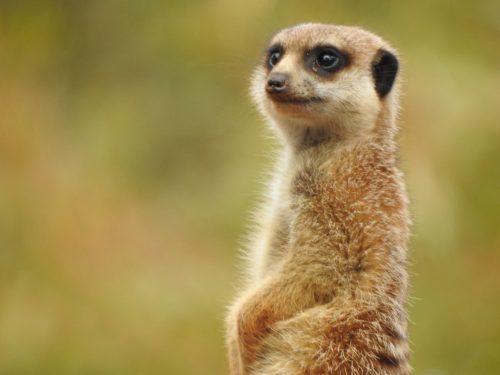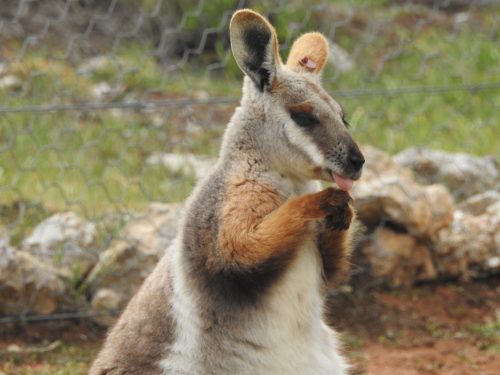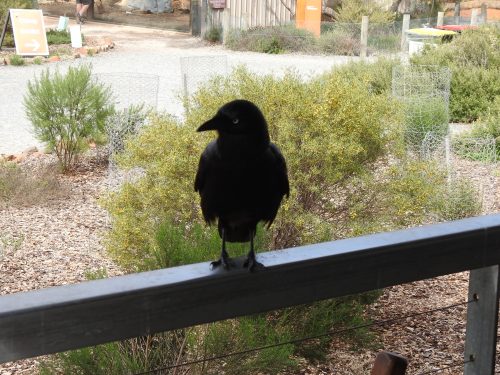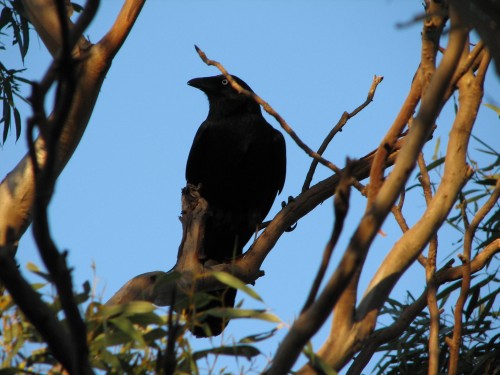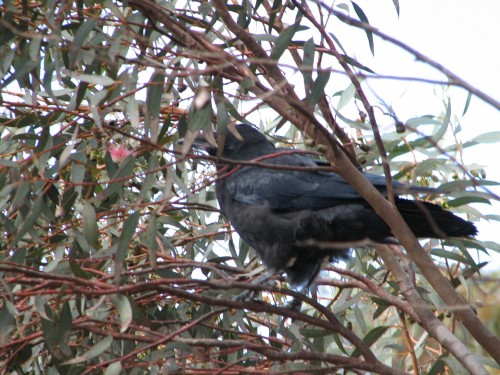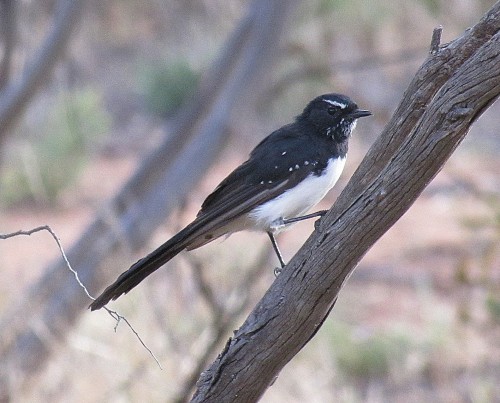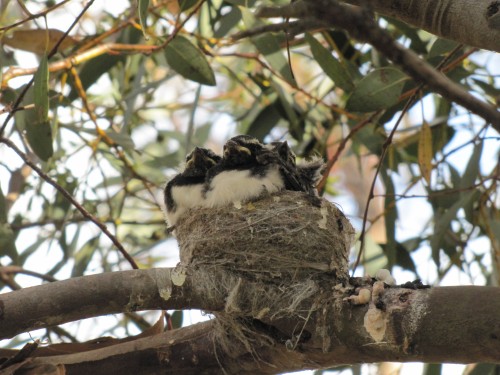Being watched by Little Ravens
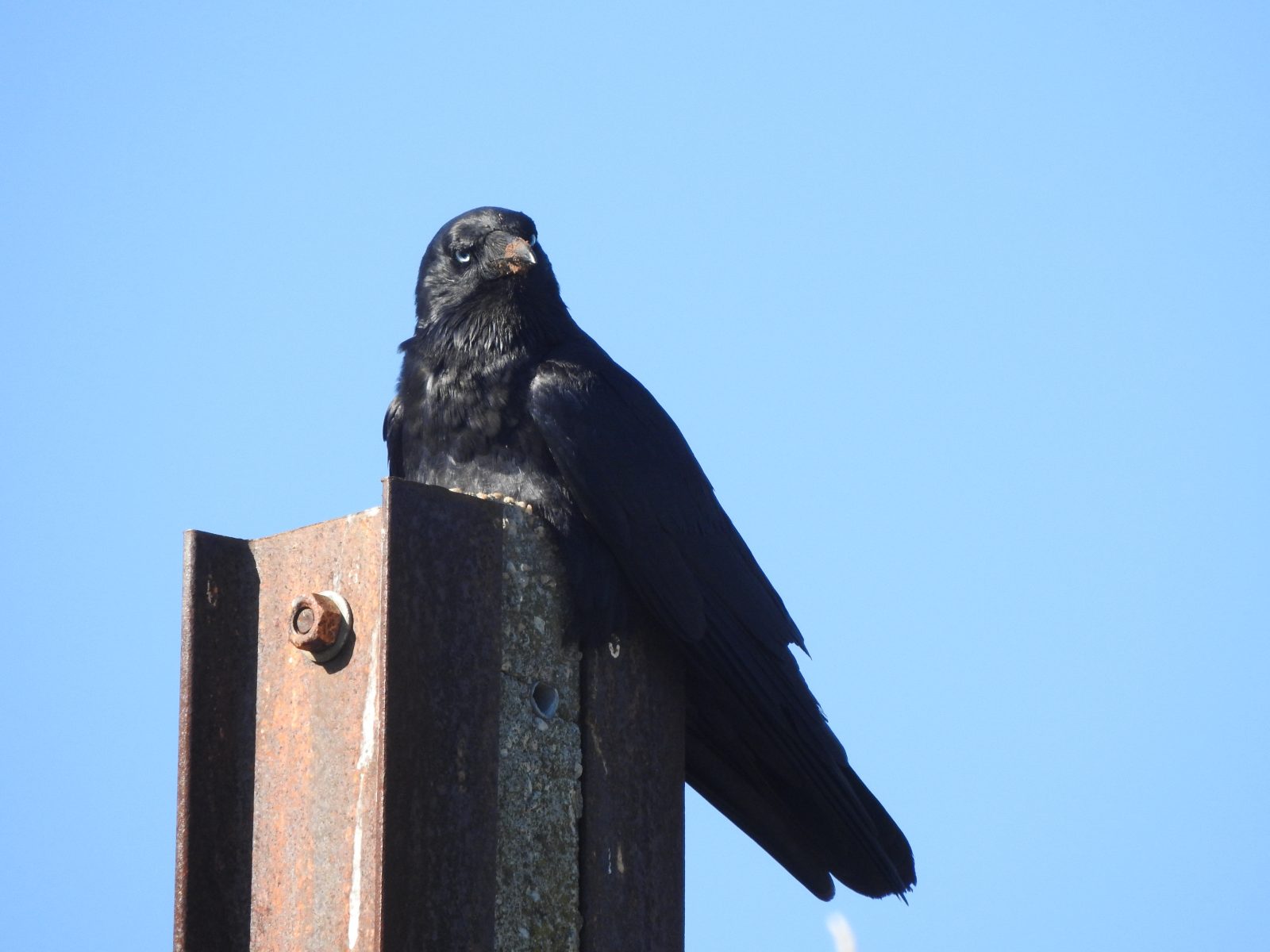
They are watching me
Ever had the feeling that someone is watching you?
I guess that feeling is common to most people. Have you ever had the feeling that an animal or bird is watching you? That is a very common feeling, I’d say. Dogs, in particular, have an uncanny way of watching people eat, for example. They always seem to know when there is food around.
Ravens nesting
Last month I was aware that the resident Little Ravens in my garden and five-acre block have been nesting. I observed them carrying sticks to a tall tree near my driveway, a spot which gives them a good lookout over the surrounding land. I had just taken some photos of the flowers of some native Australian plants in my garden when I spotted the Little Raven shown in today’s photos (above and below).
Keeping an eye on me
The photos almost look like the raven is watching me carefully, making sure that I go nowhere near the nest. Over the few weeks, before these photos were taken, I walked past the nest tree many times. At no point did the ravens call out a warning, or swoop me or anything. I just went about my business, and they continued with their nest building.
I have been away from home travelling for the last two weeks so I don’t know whether their eggs have hatched. I will still be away for a while so I expect to get home to find several young ravens begging for food.
Good birding,
Trevor
Further reading:
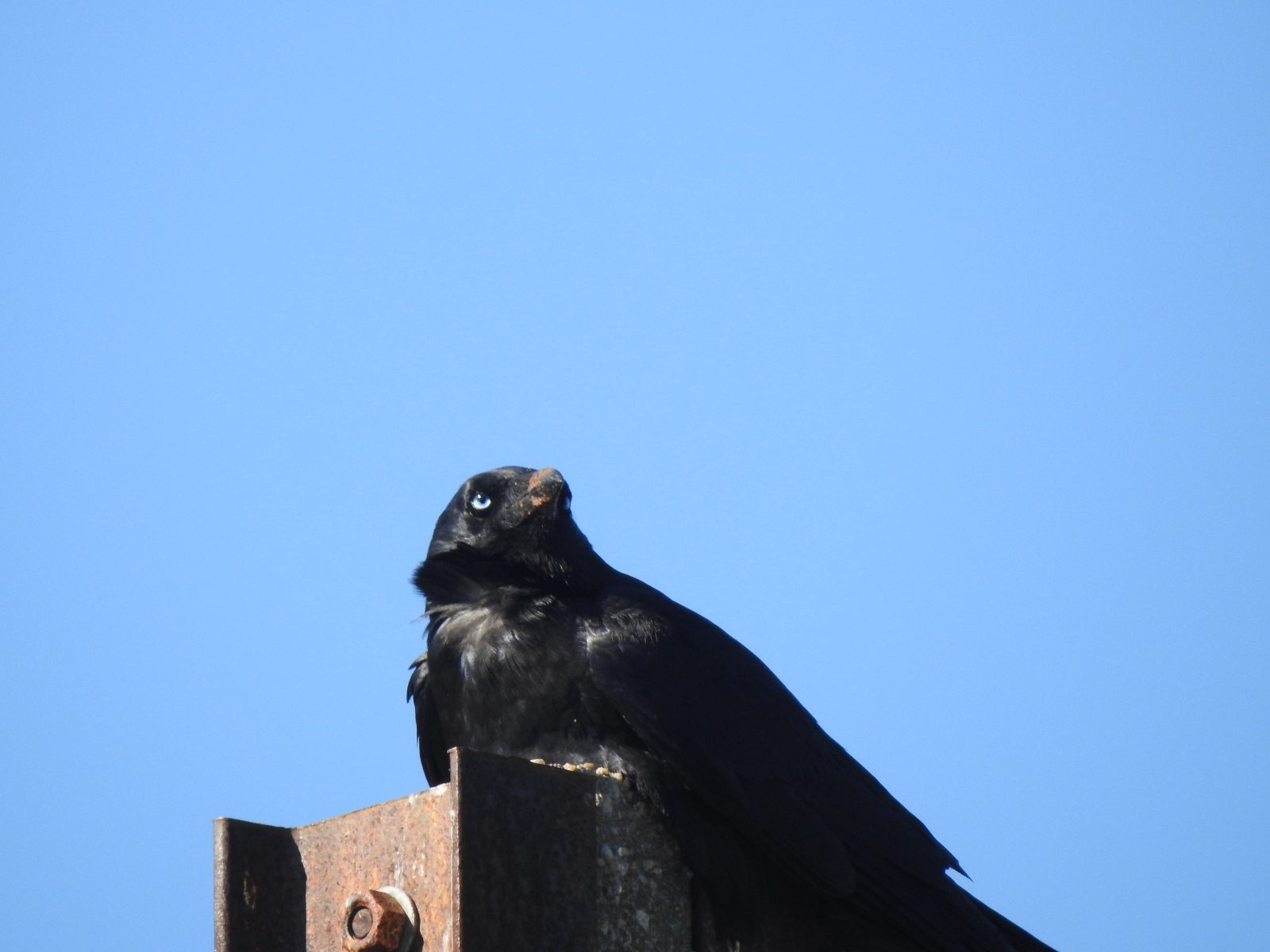
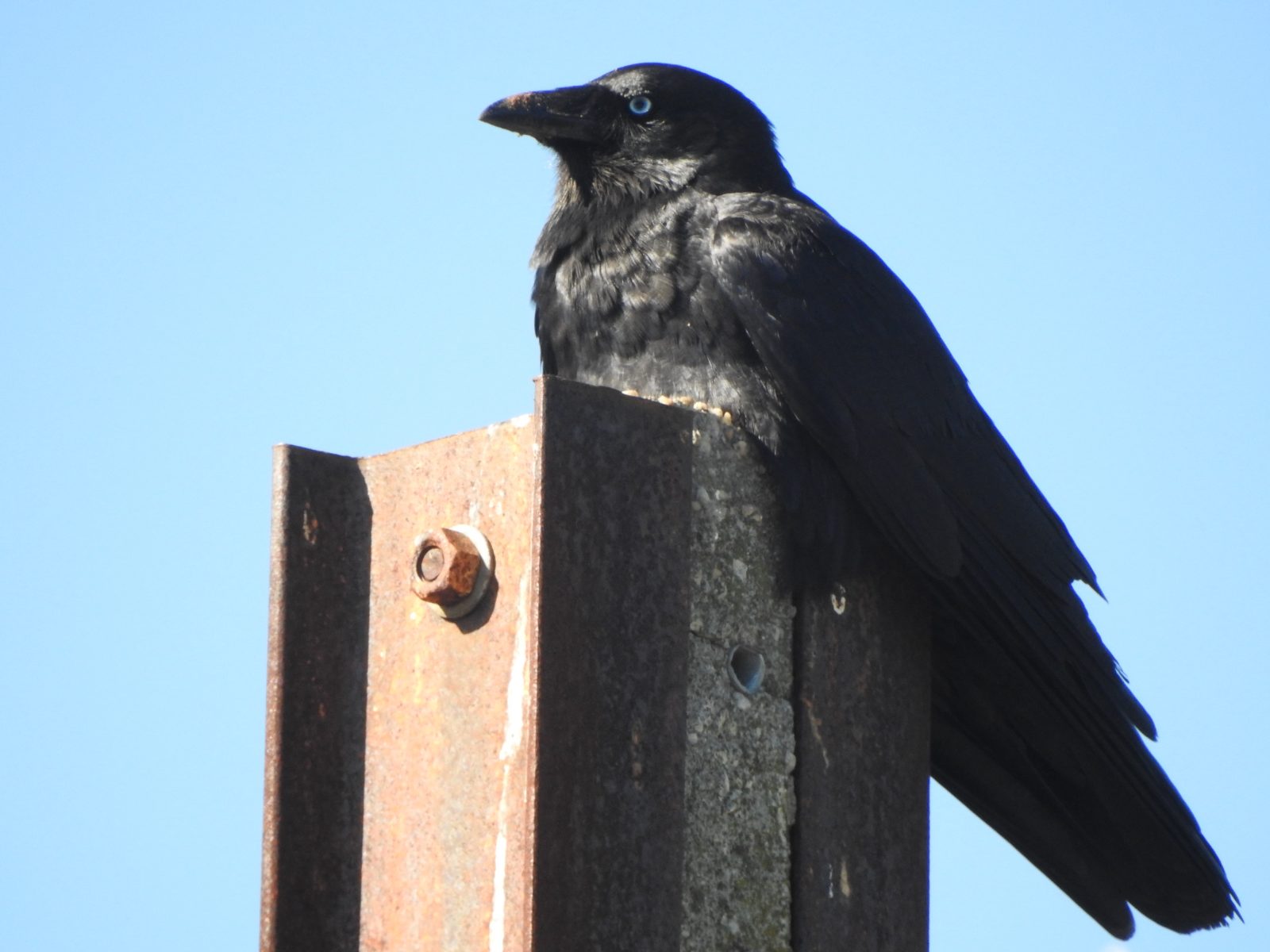
A Cheeky Raven at Monarto Zoo
A few weeks ago my daughter suggested that we visit the Monarto Zoo. It had been about a year since my last visit which is rather poor of me because it is only a ten-minute drive from my home in Murray Bridge, South Australia. And I am a member so I can enter whenever I please at no cost. Monarto Zoo is a part of the Adelaide Zoo which I also must visit again soon.
Before we went on the guided bus tour of the open range zoo we decided to buy our lunch from the cafe in the Visitor Centre. We found a suitable table overlooking the garden and before we had even started eating, one of the local Little Ravens came to join us. Just like many species of birds, this Raven had learned that people are often associated with food. It certainly was not shy and landed on the railing right next to our table. I could have reached out and touched it. I am not normally in favour of feeding our native birds, but my daughter has no such reservations. Nor did the Raven – it gratefully took the food handed out and flew off to a nearby mallee tree to consume the handout. It returned several times, both to our table and to the tables of other zoo visitors.
During our lunch, we were also visited by several Magpie-larks, another common species in this area. While they came close to our table, they never ventured as close as the Raven. I managed a good photo of the female while it was perched on the glass fence of the nearby Meerkat enclosure.
Monarto Zoo has a wonderful collection of the adorable Meerkats on display. With their enclosures having glass surrounds, everyone can get excellent views of these wonderful creatures. I have included a photo below. I have also included a photo of the beautiful Yellow-footed Rock-wallaby which is native to the Flinders Ranges in the northern parts of South Australia.
Annoyingly noisy ravens around our house
Over the last few weeks, I have been intrigued, puzzled and just a little annoyed.
Intrigued
I have been intrigued by all of the Little Ravens in our garden, on our five-acre property and along the nearby roadsides. While we only ever have two to five ravens at a time on our block of land, there would have to be at least 50 to 80 in the locality, perhaps more than that within a kilometre of our house. Obviously, there is plenty of food for them, as well as plenty of nesting sites. There is quite an extensive mallee scrub a few hundred metres just to the west of us.
Puzzled
I am puzzled because I am not sure what they are up to at present. Almost every morning this year I have heard large numbers of the local ravens constantly calling. It is usually from just after first light at around 6:30 am up until around 9 am and sometimes a little later. After that, there is just the occasional call as one or two fly overhead, or when they land in one of our trees. I have no idea why they are all calling, or why it stops after a while.
Annoyed
I have also been annoyed with the local Little Ravens, not only because I am puzzled by this behaviour, but it can get a little tedious after an hour or so of this calling, calling, calling. Normally, bird calls do not easily annoy me, though I will concede that if we had 500 Little Corellas wake us up every morning I would definitely change my mind. Thankfully that does not happen, though the local flocks of Galahs can sometimes be rather raucous, though they tend to fly overhead at sunset rather than at dawn.
Dilemma
I, therefore, have something of a dilemma. What are they doing? Why are they calling so incessantly?
I guess I will never know – unless I do an intensive field survey over many weeks in the field when I’d rather be in bed, or reading the paper.
I guess I could always try to learn how to speak Raven.
Good birding,
Trevor
Further reading:
A feisty Willie Wagtail
One of the most recognisable Australian birds would be the Willie Wagtail (see photo above). It is also one our most endearing birds, a favourite of many people. It loves occupying spaces close to human habitation, especially our gardens. We have a resident pair in our garden and we see them on a daily basis.
I have always known that Willie Wagtails can also be aggressive, feisty little birds. This has been in evidence in recent days in our garden, illustrated by the following incidents when it has attacked other, much larger species:
- Australian Magpies: our resident Magpies must be nesting somewhere on our five acre property here in South Australia. The male is consistently chasing almost every bird which comes near. Fortunately us humans are never swooped. Last Saturday, however, the roles were reversed. It was the magpie being chased – by a very aggressive and angry Willie Wagtail snapping at its tail as it tried to escape its wrath.
- Little Ravens: We often have small flocks of Little Ravens in our garden, usually up to about six or so. Yesterday I heard and then saw three ravens in the large mallee trees at the back of our home. As usual, they were cawing loudly. This attracted the attention of the Willie wagtail who rapidly came into the situation and began snapping at a raven’s feathers, tail and head, harassing the poor bird mercilessly. As soon as one raven flew off with a few caws in protest, the Willie Wagtail would turn its attention to another until all three were well and truly seen off the property.
Wedge-tailed Eagles
I have only observed Australia’s largest bird of prey, the Wedge-tailed Eagle, on one occasion here in over 30 years. It is, however, quite a common bird throughout this part of the country and I have seen the species on many occasions in my travels. It always amazes when the tiny Willie Wagtail – not much bigger than a humble House Sparrow – aggressively attacking the eagle, snapping at it and even pecking at its back while hitching a ride. Such courage – one snap of the eagle’s beak would dismiss the wagtail permanently.
The reason for this aggressive attitude:
Normally the Willie Wagtails are friendly, docile birds. They will allow all manner of birds to cohabit happily in our garden. The reason for this sudden change of attitude is a simple little nest, like the one shown below. The photo below was taken a few years ago because I don’t want to disturb the mother Willie wagtail. She is currently sitting on two lovely eggs. She is not even afraid to come after me when I get near to the nest, snapping near my head until I move a reasonable distance from the nest.
The weeds near the nest will just have to wait a few weeks to be mown. Sigh.
I recently wrote about other birds nesting in our garden (click here).
Crows using tools
I have written before about how clever crows and ravens can be. This is a well established fact and people around the world have witnessed how intelligent the corvid family can be. In fact, if you do a search for videos of these birds using tools you will find many hundreds of them; I have provided a link below.
Earlier this week I witnessed first hand one of the Little Ravens in our garden actually using a tool to assist in finding food. It had picked up what looked like a flat rock and was progressively using it to prise bark off the trunk of a mallee tree near the house. Once the bark was lifted it dropped the stone and used its beak to grab whatever was hiding beneath the bark.
Spiders, beetles and a whole range of small creatures routinely live under the bark of the local trees. Several times the bird flew down to the ground to retrieve the stone in order to use it again for the same purpose. After about three or four little snacks it flew off, stone in its beak to another tree, this time out of sight.
Of course, I didn’t have my camera handy at the time. [Sigh]
Further reading:
- Clever crows – articles from my archives
- Corvids – links to more articles about crows and ravens
- Videos of crows using tools
- Little Ravens feeding their young
- A very clever crow
